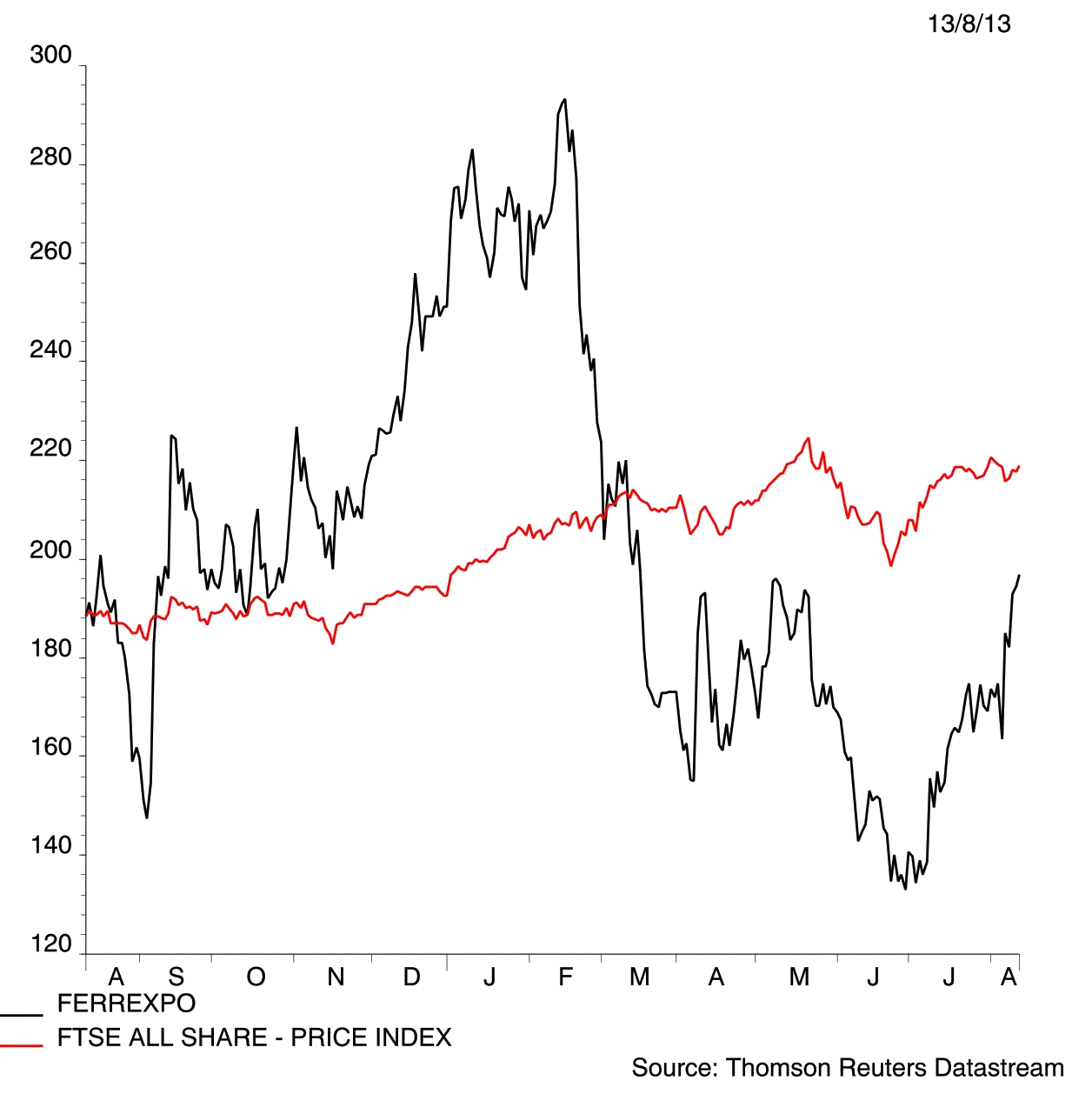The iron ore price has surprised market forecasters this year with 62% iron spot price today hitting $138.7 per tonne. That's much higher than most people had expected at this point in the calendar, leaving investors to wonder if iron ore will actually fall in value during the traditionally-weak third quarter period.
There's a favourable market consensus towards Rio Tinto (RIO) following last week's interim results despite the biggest chunk of its earnings coming from iron ore. You could argue that an impending supply glut is already well known in the market, so investors are focused on the potential for iron miners to slash costs to boost profit margins.
But has the iron ore price gone too far? Investec reckons it has an answer. Its analysis on the correlation between different types of iron ore prices, together with iron ore equity performance, implies we're now at a suitable point to consider short selling iron ore miners. Investec says a spread of less than $6 per tonne between the 6-month forward iron price and the 24-month forward iron ore price is a robust 'long' signal. When the spread exceeds $20 per tonne, it is time to sell - we're now at $21.83 per tonne spread.
In terms of equities, Investec says a basket of global iron ore equities has typically run up prior to a 'short' signal, rising 11% on average from 40 weekdays to 10 weekdays prior to the signal, before falling 16% on average from 10 weekdays prior to the signal to 18 weekdays after the signal.
Whether you buy into such analysis or not, there's no denying that the outlook for iron ore is far from compelling. Goldman Sachs reckons iron ore will average $120 per tonne in the second half of 2013, falling to $108 per tonne in 2014 and then $80 per tonne in 2015. That's a considerable drop on today's price.
This is a buyer's market with consumers able (and willing) to drive the spot price lower by deferring spot purchases and maintaining lower stockpiles than previously targeted. A large amount of Chinese steel production is thought to be cash flow negative, so mills won't be able to keep paying higher prices for their iron raw material. That will put a cap on prices, but they will also be supported by the need to maintain inventory levels above a minimum threshold level, claims Goldman Sachs in justification of its $120 per tonne near-term forecast.
The market oversupply is expected to emerge in early 2014. Large producers like Rio Tinto are increasing output, hoping for economies of scale and additional revenue to offset weaker iron ore prices. There's lots of projects around the world that are ramping up production, in addition to plenty of new mines on the cusp of development. The risk is that new mines don't get built because of the large amount of money needed to build roads and ports to facilitate exports - most of the big new discoveries are located in very remote places.
Morgan Stanley yesterday slashed its price target for Ukrainian iron ore producer Ferrexpo by 31% to 200p. It notes that the stock has 1.7 times leverage (up and down) to the iron ore price recently, but sees short-term risks that need addressing within the company. It expects iron ore prices to 'wane' as the Chinese steel industry adjusts to over-capacity and incremental seaborne production is realised, yet it says price volatility will remain. It reckons there is merit in using Ferrexpo (FXPO) as a proxy for the small-to-mid cap iron sector, or in tandem with Rio Tinto, to exploit the short-term volatility in iron pricing.
Jefferies published a good research note on Monday (12 Aug) declaring metals and mining to be 'back from the dead'. It is not convinced we're at the start of a long-term bull market for the sector, but it does acknowledge that the outlook 'may not be as bad as many had believed'.
'Our expectation had been that Chinese steel capacity would come offline for seasonal maintenance activities in July and August and iron ore demand would weaken as a result. This has not happened. Our call for iron ore price weakness in the third quarter has so far been dead wrong (although we do expect a wave of new supply and an end of restocking between now and year end to lead to lower prices),' writes the bank.
Macquarie also acknowledges the bulk commodity's surprise trading pattern. In a research note today the bank writes: 'Iron ore prices have been rising since early July. Even if this is just a restocking rally, low levels of inventory at mills and ports suggest there is room for further upside.'
More and more people appear to be giving their support to iron ore, particularly on the back of upbeat Chinese economic figures. But if iron ore does suddenly fall back in price, renewed negative market sentiment could be a particularly nasty influence to iron equity plays. Iron ore accounted for 89% of Rio Tinto's first-half underlying earnings, claims Jefferies, making it particularly vulnerable to any commodity price decline. Nevertheless, bulls would argue that the market has already priced in weaker prices and that Rio is a low-cost producer able to survive and prosper during harder times. The debate could go on and on. As for us, we remain very cautious towards iron equities.




